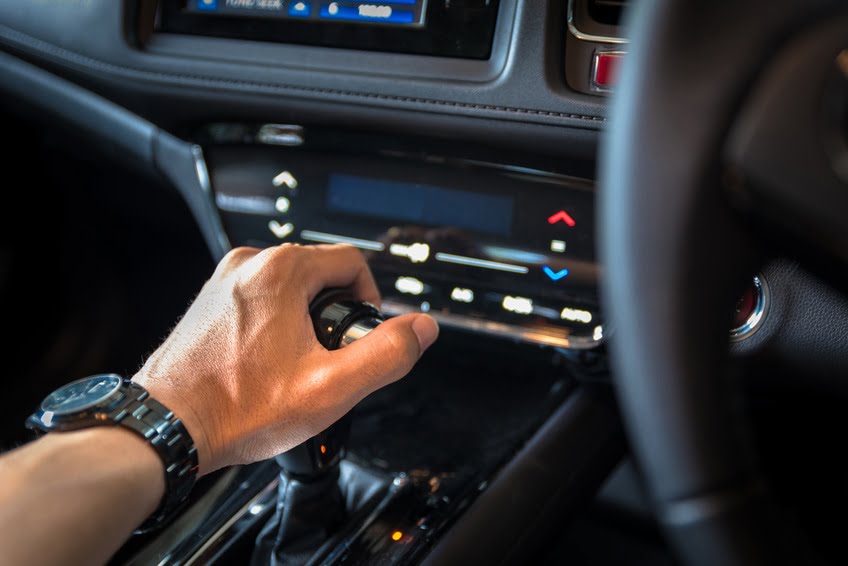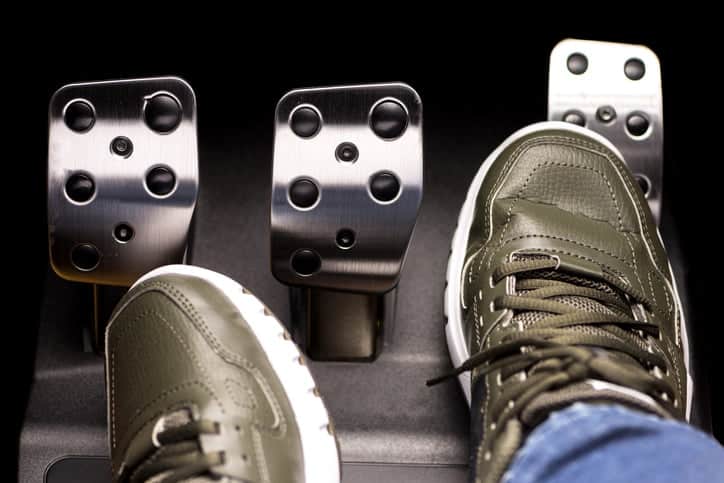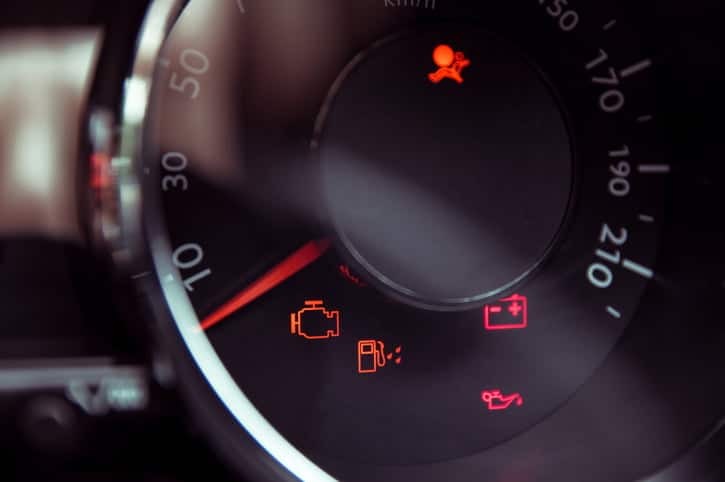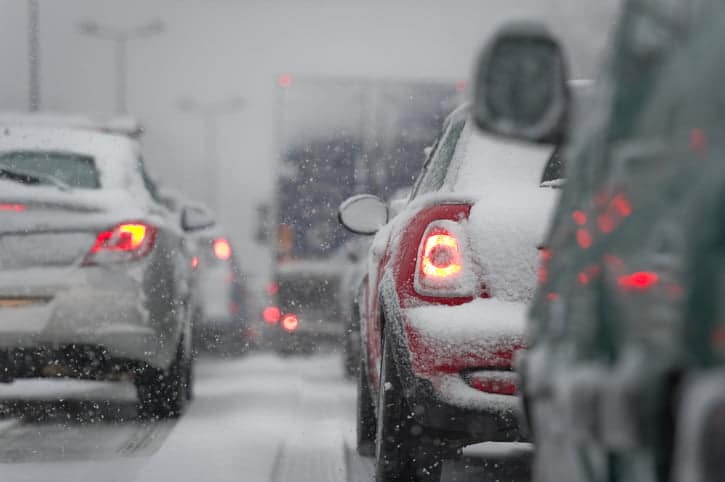Using a footbrake is the safest way to slow a car, both in normal conditions and in an emergency. But is it the most efficient? Here, we look at the other option drivers can use to slow a car – engine braking.
Quick links:
- What is engine braking?
- How to engine brake
- What are the benefits of engine braking?
- Will engine braking do harm to my car?
- When is engine braking better than normal braking?
What is engine braking?
Engine braking is basically the process of slowing the car down by releasing the accelerator and shifting down through gears, rather than using the footbrake. In technical terms, it’s using decelerative forces in the engine to slow the speed the wheels are turning at. This happens when the accelerator pedal is released, closing the air intake valve to create a vacuum. It restricts the air flow to the cylinders, sapping the energy and creating a braking force that will bring the car to a stop.
Engine braking only works when a car is in gear. When the clutch is disengaged, the decelerative force created by releasing the accelerator isn’t transferred to the drivetrain, so the wheels keep moving at the same speed. If you shift down into a lower gear you can speed up engine braking. The higher the RPM, the more torque is transferred through the transmission – helping to bring the car to a controlled stop faster.
How to engine brake
Engine braking in a manual car is a simple process, but it may take new drivers a few attempts to master.
Say you’re driving at 40mph in fifth gear and approaching a traffic light. If you want to slow down gradually, take your foot off the accelerator and switch to a lower gear, such as second or third (remembering to rev-match as you downshift). This will slow the car down without you having to touch the brakes. You can then use the clutch-and-brake technique to stop the car safely, while limiting brake pad wear.
Effective engine braking is a matter of smoothness and timing, so practice makes perfect.
What are the benefits of engine braking?
One of the key benefits of engine braking is that it reduces wear on the brakes. As calliper brakes and drum brakes rely on friction, they wear whenever the brake pedal is applied. By using a combination of engine braking and traditional braking with the foot pedal, you can drive safely and also limit the amount of wear to your brake pads – extending the life of your brakes and giving you a better drive.
Another benefit that appeals to some is the amount of control it gives you as a driver, especially downhill. By selecting a low gear before a descent, you can control the car’s speed through the engine and not just through the brakes, making it less likely that the callipers will overheat or – in the worst-case scenario – stop working altogether.
Engine braking’s also very useful in icy conditions. When roads are slippery, you run the risk of locking the wheels and skidding by using the brakes, especially if you panic and slam on the brake pedal. Engine braking can reduce this risk by helping you slow down without using the brakes, so you can control the speed of the car while keeping the wheels turning in snowy or icy conditions.
Will engine braking do any harm to my car?
Engine braking will give you high revs, so some drivers worry that it’s harming the engine. This all depends on how close to the red line the RPM is, and how long it stays there.
When downshifting to a lower gear to perform an engine brake, you should make sure the rev counter isn’t over the red line. Drive for too long with a high RPM, and the engine could overheat, placing strain on the radiator and cooling system. But don’t worry if the RPM is higher than you’d expect; provided the RPM is below the red line, there are no risks to the engine – even if it sounds loud.
Another thing to remember when engine braking is the risk to the transmission system. Jump from a high to low gear quickly, and you can place unnecessary strain on the gears and clutch plate, potentially leaving you with a repair bill much higher than the cost of a new pair of brake pads.
To reduce the strain on the transmission, rev-match when downshifting by using the throttle to increase the engine speed, then slowly and smoothly let your foot off the clutch. This means you can enter a lower gear without an uncomfortable jolt, and with minimal wear to the transmission system.
When is engine braking better than normal braking?
In normal driving conditions, using the footbrake is almost always the safest and fastest way to slow the car down. You can engine brake in normal driving conditions, but this is purely used as a way to prevent brake wear – not as a safety measure.
There are some instances, however, when engine braking is a safer and more efficient option than using the footbrake, and will help to slow the car down without the risk of skidding or overheating the brake pads to the point where they stop working.
Driving Downhill
If you’re driving downhill for long periods, it’s crucial that you don’t overuse the brakes to slow the car. As the car gains momentum with the force of gravity, more braking is needed to slow it, meaning that the brakes can start to ‘fade’ through overheating and reduced friction – which is the last thing you want driving down a steep hill.
In this situation, engine braking can be a real lifesaver; that’s why you always see signs at the top of steep hill telling you to change into a low gear. Third or even second gear will help the car stay at a steady speed, and will allow you to just lightly touch the brakes to slow your descent – meaning they aren’t subjected to any punishing wear.
Driving in Snow and Ice
Driving in snow and ice can take a lot of getting used to, and we all automatically want to use the brake pedal when we feel like we’re losing control of the car in these tricky conditions. The thing is, using the footbrake will actually make matters worse when roads are slippery, as the car will enter a slide more easily if the wheels lock-up or are slowed suddenly.
In snowy conditions, you need to find the right balance between being in a high enough gear to avoid wheel spin, while also remembering to change down gears nice and early to keep the wheels turning rather than coming to a complete stop. Always set off in second gear, as this will help prevent wheel spin. You should also keep a good distance from the car in front, and anticipate obstacles so that you can change down and use engine braking to slow the car, rather than relying on the foot brake.
Redex fuel system additives help you achieve optimum performance from your car’s engine, mile-after-mile. For more information and advice, visit our homepage.



